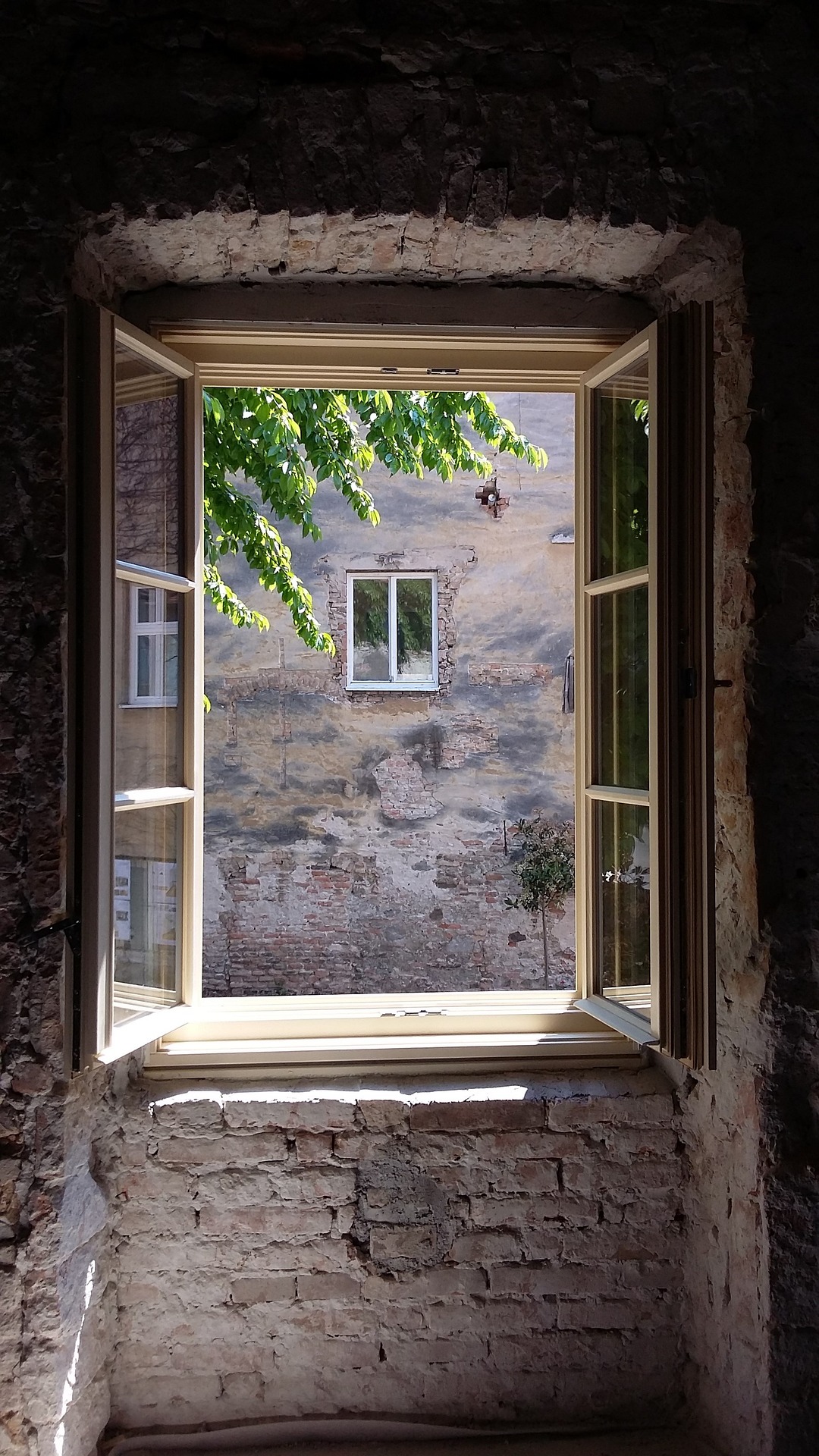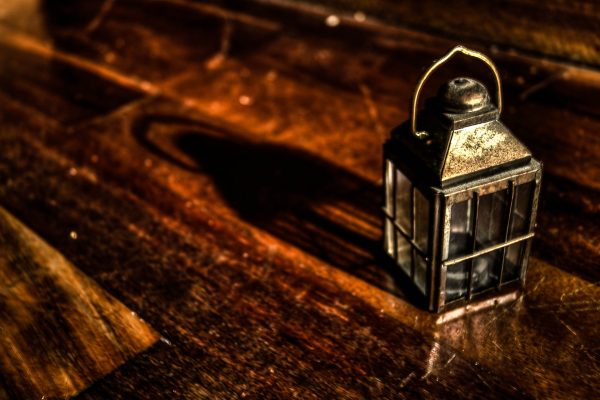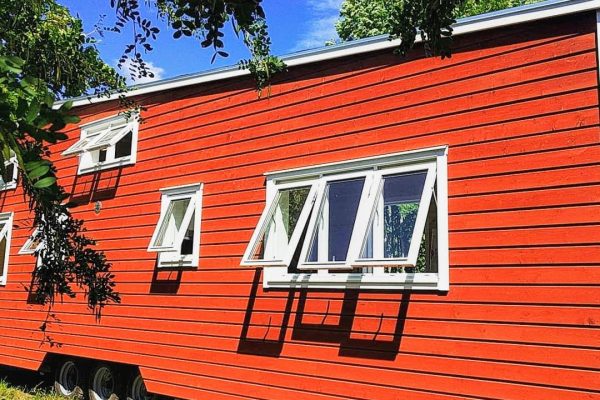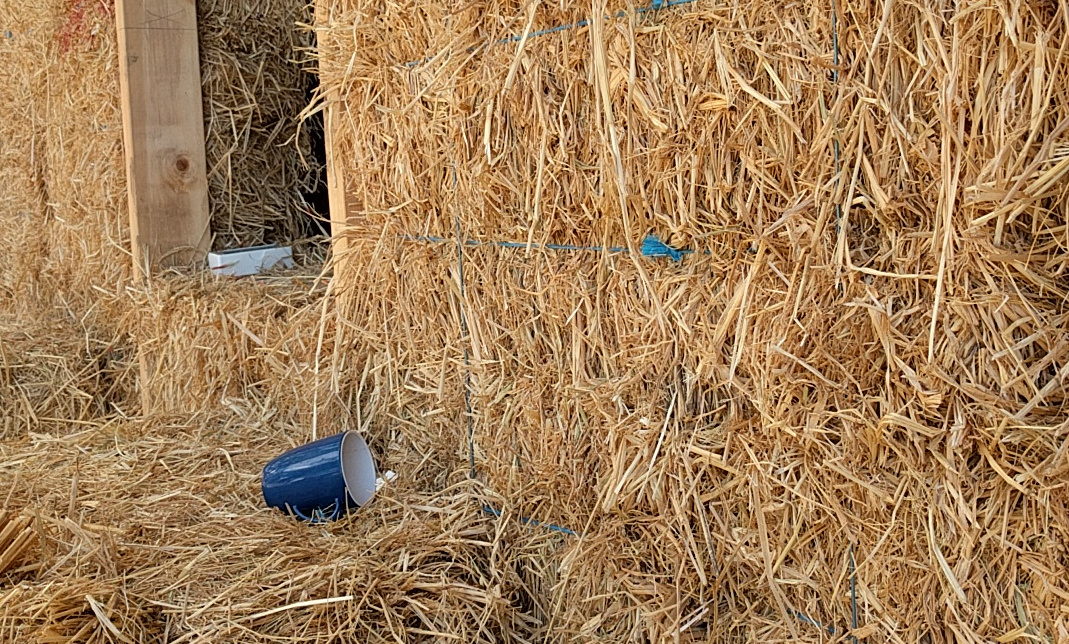I get this question a lot lately: why do you think living in a tiny house is a sustainable way of living?
I want to take a few moments to consider this question and try to answer it from my very own perspective.
1. Tiny house living means living in a smaller space
The obvious answer to the question is that living in a tiny house means that I’m living in a smaller space. A small space needs less heating, in our case also less water (we have a dry toilet and a low-flow shower head). It means the house used fewer resources during construction and will emit less at the end of its life. And since we build along the lines of a passive house, we also use fewer resources heating and cooling than our previous house (by a lot, actually).
Living in a smaller space also means that we as a family consume less. We have less space for stuff and therefore are less tempted to go out and shop. All the things we own have a purpose and we cannot afford to hoard anything.
2. Tiny house living means fitting into smaller spaces
Because our house fits into a physically smaller space, we don’t require an entire section of land for us. While we do have a backyard, we occupy less land than we did in our previous house.
The unsustainable part of this story is that due to building regulations in most cities we cannot (currently) park our house in vacant plots of land. We are in a country town where regulations are more relaxed and we are able to live in the house full-time.
This life, however, means that we are far away from most infrastructure. The closest shop (aside from a corner store) is 15 min drive away and there is only a very infrequent public transport connection. The kids’ preschool luckily is merely 15 min walk, which is great.
3. Tiny house living for us means to be outside more
The best part (and a deciding factor when we started thinking about going tiny) is that we get to spend a lot of time outside. The kids have space to kick a ball, I love sitting with our chickens and my husband enjoys his DIY projects. All these aspects were very limited to us before because we didn’t have the outside space.
On top of that comes that because the house is small, it forces us to step outside from time to time. Although our design allows us each to have privacy when we need it, we can still get on each other’s nerves. So, getting outside is a great (and the only) way to escape the house.
Being outside might not be the most obvious sustainable living aspect but for us, but it means to stay in touch with nature. And being outside strengthens us mentally and physically.
4. Is building a tiny house with virgin materials unsustainable?
We build our house from virgin materials. Although that was an aspect of our build I would have loved to have different, building with recycled materials requires a lot of time, patience and storage. So we went with virgin materials.
However, we chose local materials as much as possible. Just an example: since we build our house in Sweden, we used wood for the frame, the insulation, the walls, and the countertops. And wood is a local resource in abundance here in Scandinavia.
But I don’t want to sugar-coat it. Building a tiny house from virgin materials is not the best choice when it comes to sustainable living.
5. Is tiny house living the answer to sustainable living everywhere?
The answer here has to sadly be: no, living in a tiny house is not the answer.
The reasons are manifold. For starters, although tiny houses use less space, they can only house a limited number of people. I also haven’t seen a tiny house apartment block with multiple houses occupying a small block of land.
Further, most people (us included) move to a tiny house to get away from the cities. Unfortunately though with that, they (and we) lose access to public services. Some tiny houses are explicitly in being off-grid but not all. And it’s not just services to the house, it’s also public life, medical services, employment, and a social life. In order to keep access to these services, we have to drive by car. And I correctly hear that it doesn’t make sense to try and get away from everything but then to drive again to have access to it.
It is a matter of policies at the moment to integrate the ideas of tiny houses (fewer resources, clever use of space, small households) into cities. If we could park our tiny house in a city without restrictions, we could lead an (almost perfect) sustainable life.




